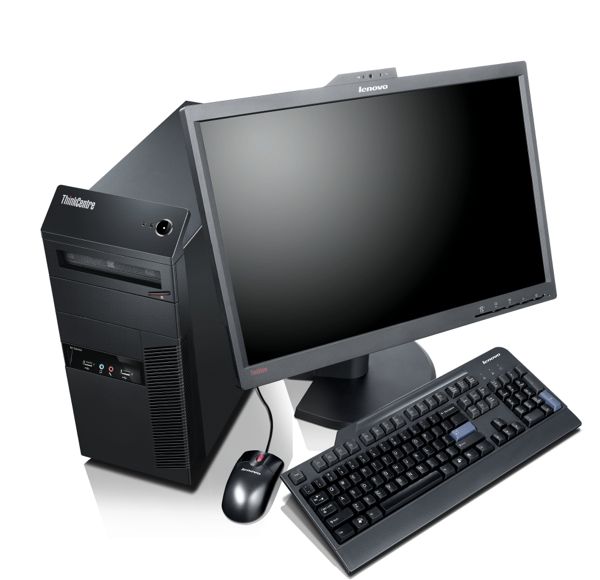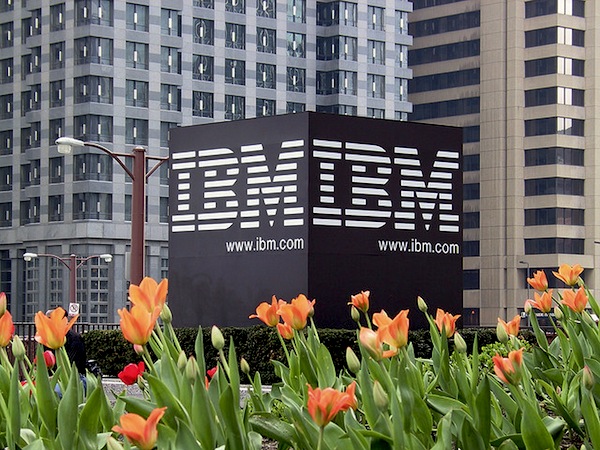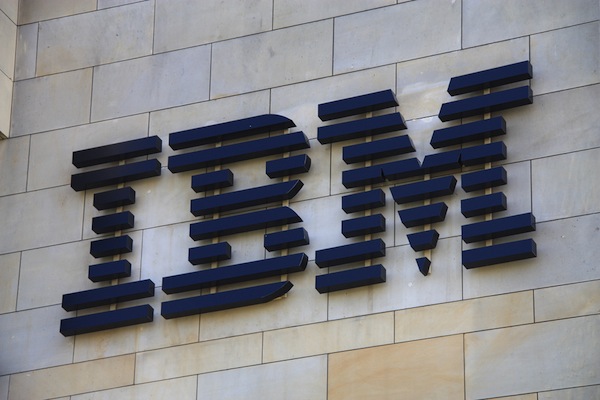
This is how IBM intimidates employees
I struck a chord with my recent column on H-1B visa abuse, so soon follow up with an enormous post that tries to explain the underlying issues. But before then here’s something I came across that doesn’t quite fit that theme but was too interesting to let pass unnoticed -- how companies like IBM intimidate employees and discourage them from speaking up.
A few years ago there was a class action lawsuit against IBM. Thirty-two thousand server administrators were being forced to work overtime without extra pay. IBM lost the suit and paid a $65 million settlement. That’s just over $2,000 per affected employee before the lawyers took their share. Then IBM gave all those workers a 15 percent pay cut with the justification they’d get it back in overtime pay. Next IBM restricted the workers to 40 hour weeks so there would be no overtime.

IBM doesn't even pretend to comply with H-1B immigration law
I’ve been away. We had a death in the family (my brother-in-law) which turned me into a single parent for a few days -- a paralyzing experience for an old man with three small boys and two large dogs. You never know how much your spouse does until it all falls for awhile on your shoulders. I am both humbled and a bit more wrinkled for the experience.
While I was being a domestic god a reader passed to me this blog post by John Miano, a former software developer, founder of The Programmers Guild, now turned lawyer who works on immigrant worker issues as a fellow at the Center for Immigration Studies (CIS) a supposedly nonpartisan think tank in Washington, DC. I don’t know Miano and frankly I hadn’t known about the CIS, but he writes boldly about H-1B visa abuses and I found that very interesting.

IBM introduces new PureData System
Targeting enterprise clients, after PureFlex and PureApplication Systems, IBM has introduced the third member in its PureSystems family. Named IBM PureData System, it is purposefully designed for big data cloud appliances by providing data services to various applications.
The new PureData System family is comprised of two major platforms. PureData System for Transactions, which is aimed at improving data management costs, and PureData System for Analytics, which is designed to analyze large volumes of data.

Lenovo picks AMD APUs for business class ThinkCentre M desktops
Chinese PC maker Lenovo on Monday debuted the newest model in its flagship line of desktop computers designed for medium- to large-scale businesses, the ThinkCentre M78.
Since it's built for enterprise, there isn't much in the way of new frilliness from generation to generation in this line. However, it should be noted that this time around, Lenovo has equipped these ThinkCentres with AMD's A-Series APU. The last version of the M-series was based on Intel Core i processors and AMD/ATI GPU, so if you're doing an incremental upgrade, you might be in for a different experience since it's all on a single die.

IBM acquires recruitment and HR tech company Kenexa
IBM and Kenexa Corporation on Monday jointly announced they had entered into an agreement where IBM would acquire Pennsylvania-based Kenexa for approximately $1.3 billion. The transaction was unanimously approved by Kenexa's board of directors, and it will next be subjected to a shareholder vote and regulatory approval. The transaction is expected to close in the fourth quarter.
Kenexa's solutions are squarely in the "big data" analysis category. They focus on recruitment, human resources, compensation, as well as knowledge, relationship, and performance management. This acquisition closely follows IBM's recent acquisitions of Varicent Software Inc. and Tealeaf.

Lenovo debuts ThinkPad X1 Carbon, I start selling my stuff to get it
The news has already broken. Three days ago in Beijing, Lenovo unveiled the latest ThinkPad ultrabook, the ThinkPad X1 Carbon. Last night, the company repeated its performance in a ceremony in New York city to simultaneously celebrate the 20th anniversary of the ThinkPad line of notebook computers, and officially unveil to the U.S. some new products. Chief among the new devices was the ThinkPad X1 Carbon.
The X1 Carbon is a 14-inch Ultrabook that weighs less than three pounds thanks to its carbon fiber chassis. It offers an eight hour battery, optional 3G mobile broadband, 720p face-tracking camera, fingerprint scanner, backlit keyboard, and a glass multi-touch touchpad. The base specs of the device include a 1.7GHz Intel Core i5 CPU with 4GB of RAM, and a 128GB SSD for $1,299. While modest specs for a baseline, they can be upgraded to an Ivy Bridge Core i7 processor, 8GB of RAM and a 256GB SSD.

IBM’s Indian Global Delivery Centers are anti-education?
The theory of outsourcing and offshoring IT as it is practiced in the second decade of the 21st century comes down to combining two fundamental ideas: 1) that specialist firms, whether here or overseas, can provide quality IT services at lower cost by leveraging economies of scale, and; 2) that offshore labor markets can multiply that price advantage through labor arbitrage using cheaper yet just as talented foreign labor to supplant more expensive domestic workers who are in extremely short supply. While this may be true in the odd case, for the most part I believe it is a lie.
This lie is hurting both American workers and the ability of American enterprise to compete in global markets.

IT isn't powerless against the death squads of corporate America
About 10 weeks ago, I wrote a six-part series of columns on troubles at IBM that was read by more than three million people. Months later I’m still getting ripples of response to those columns, which I followed with a couple updates. There is a very high level of pain in these responses that tells me I should do a better job of explaining the dynamics of the underlying issues not only for IBM but for IT in general in the USA. It comes down to class warfare.
Warfare, to be clear, isn’t genocide. There are IT people who would have me believe that they are complete victims, powerless against the death squads of corporate America. But that’s not the way it is. There’s plenty of power and plenty of bad will and plenty of ignorance to go around on all sides here. Generally speaking, though, the topic is complex enough that it needs real explaining -- explaining we’re unlikely to get elsewhere in an election year dominated by sound bites.

Is there an IT labor shortage in the USA that can only be solved with more H1B visas?
My recent series of columns on troubles at IBM brought me many sad stories from customers burned by Big Blue. I could write column after column just on that, but it wouldn’t be any fun so I haven’t. Only now a truly teachable lesson has emerged from a couple of these horror tales and it has to do with US IT labor economics and immigration policy. In short the IT service sector has been shoveling a lot of horseshit about H1B visas.
The story about H1B visas is simple. H1B’s are given for foreign workers to fill US positions that can’t be filled with qualified US citizens or by permanent US residents who hold green cards. H1Bs came into existence because there weren’t enough green cards and now we’re told there aren’t enough H1B’s, either. So there’s a move right now in Washington to increase the H1B limit above the current level of approximately 65,000 because we are told the alternative is IT paralysis without more foreign workers.

Today's IBM, rotten to the core
Six in a series. So after five parts, one question remains: What will IBM look like by the end of 2015? It will look like Oracle.
With earnings per share meaning everything and a headcount mandate that can’t be achieved without totally transforming the company, IBM is turning itself into something very different. Gerstner’s service business that saved the company 20 years ago will be jettisoned, probably to a combination of US and international buyers.

IBM is at a tipping point
Fifth in a series. When I was growing up in Ohio, ours was the only house in the neighborhood with a laboratory. In it the previous owner, Leonard Skeggs, had invented the automated blood analyzer, pretty much creating the present biomedical industry. Unwilling to let such a facility go to waste, I threw myself into research. It was 1961 and I was eight years old.
I was always drawn to user interface design and quickly settled, as Gene Roddenberry did in Star Trek half a decade later, on the idea of controlling computers with voice. Using all the cool crap my father (a natural scrounger) dragged home from who knows where, I decided to base my voice control work on the amplitude modulation optical sound track technology from 16mm film (we had a projector). If I could paint optical tracks to represent commands then all I’d need was some way of analyzing and characterizing those tracks to tell the computer what to do. But the one thing I didn’t have down in the lab in 1961 was a computer.

How do we just fix IBM?
Fourth in a series. Well it can’t be done from the inside, so it has to be done from the outside. And the only outside power scary enough to get through the self-satisfied skulls of IBM top management is IBM customers. A huge threat to revenue is the only way to move IBM in the proper direction. But a big enough threat will not only get a swift and positive reaction from Big Blue, it will make things ultimately much better for customers, too.
So here is exactly what to do, down to the letter. Print this out, if necessary, give it to your CEO or CIO and have them hand it personally to your IBM account rep. Give the IBM rep one business day to complete the work. They will fail. Then go ballistic, open up a can of whoop-ass, and point out that these requirements are all covered by your Service Level Agreement. Cancel the contract if you feel inclined.

It’s a race to the bottom, and IBM is winning
Third in a series. The current irrationality at IBM described in my two previous columns, here and here, is not new. Big Blue has been in crazy raptures before. One was the development of the System 360 in the 1960s when T.J. Watson Jr. bet the company and won big, though it took two tries and almost killed the outfit along the way. So there’s a legacy of heroic miracles at IBM, though it has been a long while since one really paid off.
There are those who would strongly disagree with this last statement. They’d say that with its strong financial performance IBM is right now in one of its greater moments. But haven’t we just spent 2000 words showing that’s not true? Successful companies aren’t heartsick and IBM today is exactly that, so the company is not a success.

Why is IBM sneaking around?
Second in a series. IBM’s 2015 plan was hatched to deliver $20 earnings-per-share to the delight of Wall Street. IBMers were offered a carrot, a few shares of stock granted at the end of 2015, as a reward for helping them achieve that target. It appears that IBM’s goal is not to issue any of those grants as they continue to conduct resource actions (IBMspeak for permanent layoffs) and remove talented and valuable US employees in favor of moving work to low cost countries such as Brazil, Argentina, India, China and Russia.
Work that stays onshore is mainly sent to what are called Global Delivery Facilities (GDF’s), two of which were created at heritage IBM locations (Poughkeepsie, NY and Boulder, CO) while starting new ones in Dubuque, IA and most recently Columbia, MO. IBM’s public position is they are creating jobs in smaller towns when in fact they are displacing workers from other parts of the United States by moving jobs to these GDFs or to offshore locations.

The Downfall of IBM
First in a series. This is my promised column about IBM -- the first of several on the topic, all to be delivered in a series. The last time I wrote at length about Big Blue was in 2007. I have been asked many times to revisit the subject, something I haven’t wanted to do because it is such a downer. Writing the last time I hoped the situation, once revealed, would improve. But it hasn’t. And so, five years later, I turn to IBM again. The direct impetus for this column is IBM’s internal plan to grow earnings-per-share (EPS) to $20 by 2015. The primary method for accomplishing this feat, according to the plan, will be by reducing US employee head count by 78 percent in that time frame.
Reducing employees by more than three quarters in three years is a bold and difficult task. What will it leave behind? Who, under this plan, will still be a US IBM employee in 2015? Top management will remain, the sales organization will endure, as will employees working on US government contracts that require workers to be US citizens. Everyone else will be gone. Everyone.
